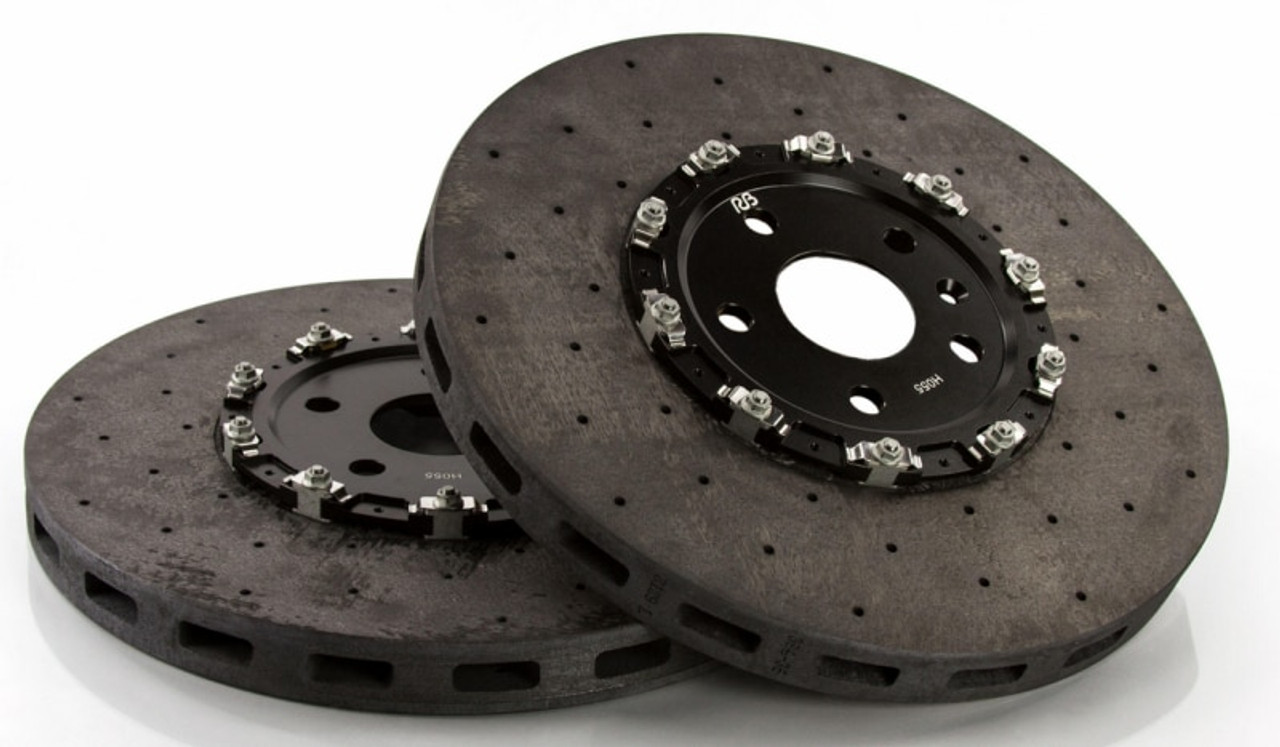Automotive Carbon Ceramic Brakes have entered the mainstream in recent years, appearing as options on high-end sports cars and luxury vehicles. While still more expensive than traditional brake materials, carbon ceramic brakes offer stoping power and durability that makes them appealing for demanding applications. Let’s take a closer look at these advanced braking systems.
Automotive Carbon Ceramic Brakes use a carbon-carbon composite material for the friction surfaces instead of more traditional brake pad compounds. The carbon discs are solid, single-piece constructions that are extremely resistant to heat. Manufacturers create the carbon-carbon compound by taking carbon fibers or fabrics and densifying them through resin impregnation and high-temperature curing. This results in a lightweight yet incredibly strong material that is well-suited for high-performance braking applications.
In addition to the carbon discs, carbon ceramic brakes also use aluminum calipers with titanium pistons to clamp the discs. The pistons are coated with a ceramic material for durability and heat resistance. This entire braking assembly is designed to withstand extreme temperatures up to 1000°C or more without deterioration of the friction surfaces.
Benefits Over Traditional Brakes
The key advantages that Automotive Carbon Ceramic Brakes offer over more common alternatives like cast iron or non-directional finished discs include:
– Superior Heat Dissipation – Carbon ceramic’s thermal conductivity allows it to dissipate heat far more efficiently than other materials. This prevents brake fade even under heavy track use conditions.
– Lightweight – Being made from carbon fiber rather than heavier materials like iron means carbon ceramic brakes can save approximately 20-25 pounds per axle. Less unsprung weight aids handling.
– Durability – The carbon composition is extremely resistant to abrasion, cracking, and wear. Brake pads may last the lifetime of the vehicle versus replacements every 2-3 years with other materials.
– Minimal Dust – Carbon ceramic produces very little dust, keeping wheels and wheel wells cleaner. The material also does not corrode.
– Consistent Performance – Heat buildup does not degrade the friction surfaces so braking feel and performance stay linear.
Applications in Road Cars
For many years, carbon ceramic brakes were relegated to exotic supercars and race vehicles due to very high costs. However, greater production volumes have seen the technology trickle down to more attainable premium models in recent years. Here are some notable production vehicles that now offer carbon ceramic brakes:
– Porsche 911 GT3/Turbo – Helping maintain composure during intense track use.
– Mercedes-AMG GT, C63 – Providing superior heat resistance on performance variants.
– McLaren 720S – Lightweight braking to maximize performance-to-weight.
– BMW M3/M4, M5, M8 – Enhancing high-speed braking ability through maximum cooling.
– Audi R8, Lamborghini Huracan – Exceptional stopping power befitting ultra-exotic designs.
As carbon ceramic manufacturing improves and costs come down, expect to see the technology filter into even more mass-market sports cars and SUVs in the coming years. Brands like Ford, Honda, Nissan, and Hyundai have begun offering carbon ceramic upgrades as well.
Costs and Maintenance
A downside that has kept Automotive Carbon Ceramic Brakes reserved for higher-end models is the significant price premium versus standard brakes. Carbon discs alone can easily cost over $30,000 to sourc and install in a vehicle as original equipment.
Aftermarket replacement carbon brake discs range from $8,000 up to $16,000 or more per axle depending on the application. In contrast, a set of traditional brake pads may cost just a few hundred dollars.
However, the reduced need for replacement parts over the life of the vehicle can offset those high upfront costs in the long run. Carbon ceramic brakes also require no special break-in procedures and are simple to maintain, usually just requiring regular inspections of pad thickness. Proper bedding procedures when new pads are installed helps maximize performance.
With proven durability advantages and applications diversifying, carbon ceramic brakes appear primed to take an even greater role in the automotive industry. Their immense stopping capacities make them appreciated by driving enthusiasts while benefiting OEMs and customers through reduced maintenance needs long-term. As the technology matures further, carbon ceramic may eventually become a standard offering on many high-performance machines.
*Note:
1. Source: Coherent Market Insights, Public sources, Desk research
2. We have leveraged AI tools to mine information and compile it

